At Ylcaster, you can find different castors. Which castors are the best for your industry? That depends on the environment and circumstances in your company.
The wheels and castors in our assortment have many components, characteristics and features which give them the right properties for your business purposes.
If you are looking for a specific type of wheel or need castors for a specific application, feel free to contact us for a bespoke solution.
To find the best type of castors for your industry application, take a look at our different types of castors.
In our product range, you can find different types of castors for a variety of purposes. In brief, we will summarize some of the most common types of castors and their applications.
Swivel castor or rigid castor?
Practically all castors are divided into two categories. You can either choose a swivel castor that is able to rotate in any direction, even when carrying a heavy load. If you need the wheel to move in a straight line you can choose for a rigid, also known as fixed castors, which can not be steered but can only move back and forth.
Locking castors with brake system
You specifically need locking castors when you need to move up and down a slope or when you want to prevent the load to suddenly move. In most cases, a castor with a lock is needed for safety, either to prevent the load from damaging or to ensure a safe working environment. The brake system is traditionally mounted on the swivel castor as it combines the braking of the wheel rotation with the braking of the horizontal “swiveling” rotation.
Castors with locks are often used on containers, platforms, scaffolding, furniture or containers. There are different castor brake types that you can use, you can choose for:
- A brake that presses only the spinning of the wheel, these are single braked castors.
- A double working brake that brakes the rotation of the wheel and the swivelling of the swivel castor.
- Or a brake that pushes on the floor and lifts up the platform or trolley, this can be levelling castors or floor brakes, also known as truck locks.
Plate castors, bolt hole castors or stem castors
Plate castors are used in a wide variety of applications and are available as both rigid castors as well as swivel castors. The mounting plate makes it easy to attach the wheels to the appliance which needs to be able to move. The mount plate consists of a rectangular steel plate with 4 drill holes to fasten the castor with. Depending on your preferences or requirements we can create various hole patterns on our top plate castors.
Stem castors are mostly used when there is little space to connect your castor on. The stem on these castors is the connection point for the wheel. These stem mounts are often threaded, but we can also provide them non-threaded in a round or square shape with mounting holes or expandable stems.
Bolt hole castors are a certain type of stem castors that you can fasten through the centre of a swivel head. These castors are often used on equipment like trolleys, carts or medical equipment.
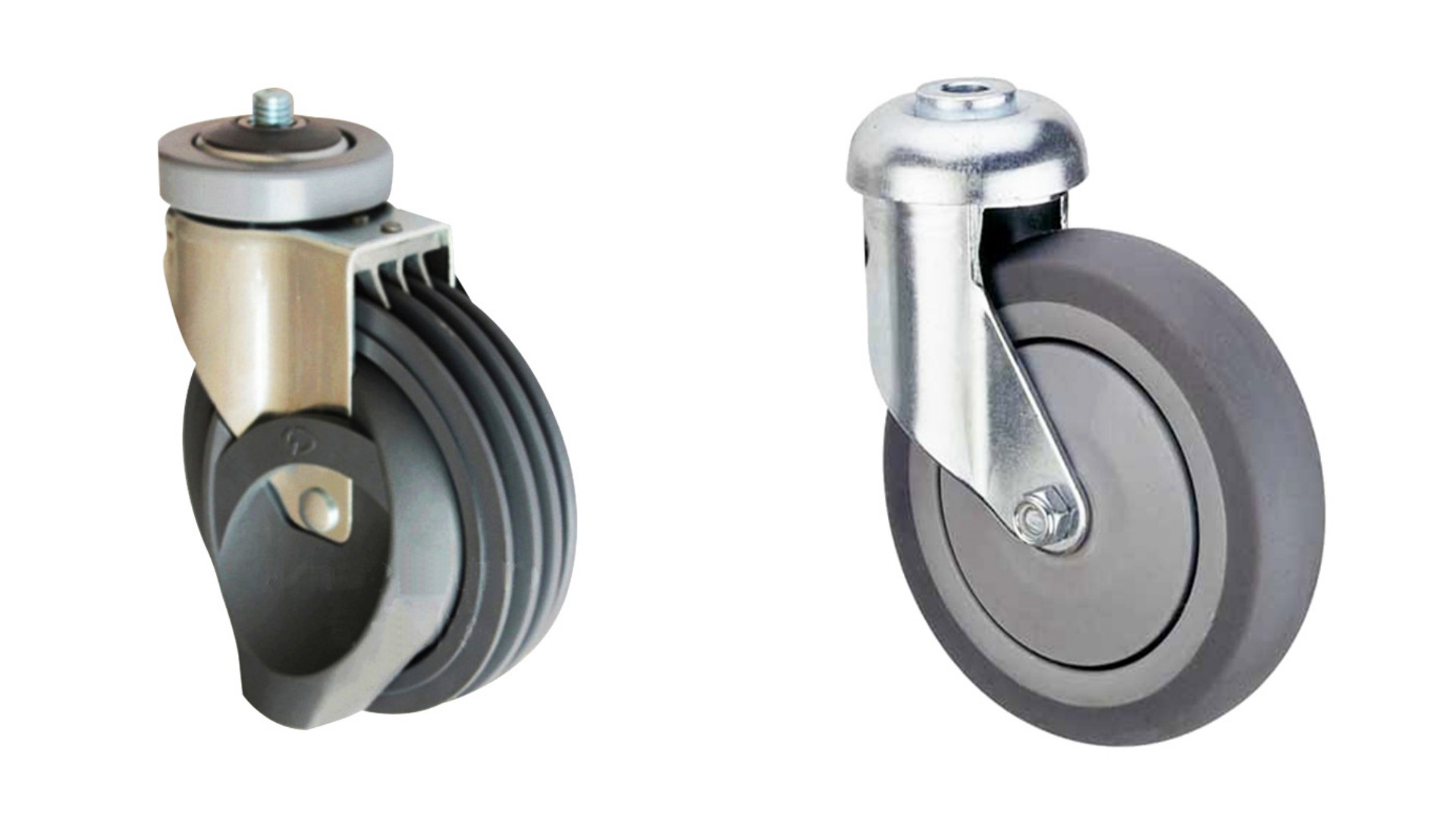
Shopping Cart Casters are used for carts in supermarkets, hypermarkets, etc.
1. According to the wheel material classification, it can be divided into two types: Polyurethane Casters and TPR Casters.
2. According to the installation method, it can be divided into Threaded Stem Casters and Bolt Hole Casters.
3. According to the specific use, it can be divided into Escalator Casters and ordinary casters.
The sizes are 3 inch, 4 inch, and 5 inch respectively, and the load capacity is 60KG to 110KG, all of which are equipped with ball bearings.
Escalator Casters can be divided into 2-piece wheels, 3-piece wheels and 4-piece wheels according to the number of flanges on the wheel surface. Ball bearings are also embedded in the swivel structure of the casters, which improves the impact resistance and makes it more durable. There is also a rubber anti-collision strip on the outside of the rotating structure to reduce direct contact and collision between shopping carts.
To remove shopping trolley wheels:
Inspect the Wheel: Check for nuts, bolts, or clips securing the wheel.
Remove Fasteners: Use a wrench or socket set to loosen and remove any nuts or bolts. For clips, use pliers or a flathead screwdriver.
Detach the Wheel: Once the fasteners are removed, gently pull the wheel off the axle. If it's stuck, tap it lightly with a rubber mallet.
Riveted Wheels: If rivets are holding the wheel, drill them out or cut them using a hacksaw or angle grinder.
Inspect the Axle: After removal, check the axle for wear before replacing or reattaching the wheel.
Safety Tip: Wear gloves and safety glasses, especially when using power tools.
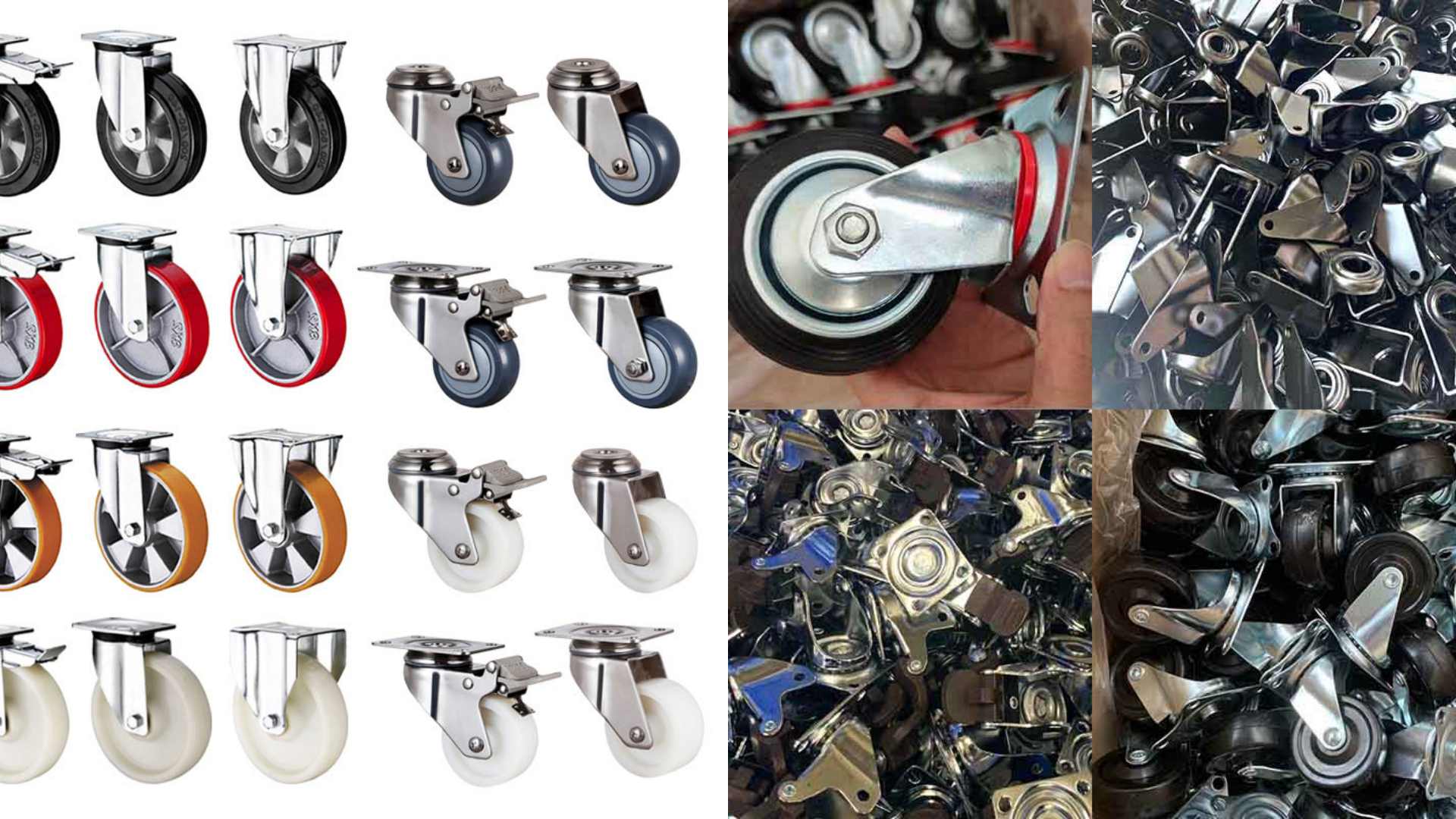
Key Considerations When Selecting Heavy-Duty Steel Casters
Weight Capacity
All castor wheels heavy duty are designed to handle substantial loads, but some materials offer superior performance. For instance, heavy swivel rubber casters and polyurethane casters excel in both load-bearing and load-dampening abilities, while cast iron casters provide excellent durability. If you need to move equipment weighing several thousand pounds, these materials might be your best options.Facility Surface Maintenance
When surface protection is a priority, choosing the right caster material is crucial. Some casters are designed to distribute weight more gently on floors. Nylon casters, for example, are exceptional at preserving floor quality even under heavy loads.
Types of Caster Wheels by Material
Cast Iron Heavy-Duty Castors
Cast iron castors are unmatched in force absorption and load-bearing capacity, making them ideal for moving large, heavy equipment. However, this strength comes at the cost of floor protection, as iron wheels can be harsh on surfaces.
Nylon Wheels Casters
Nylon casters have become increasingly popular for their ability to resist surface abrasion while providing excellent traction. They are gentle on floors and can handle significant loads, making them a versatile choice.
Aluminum Core Polyurethane Casters
Aluminum core polyurethane casters are lightweight yet resilient, offering a good balance between mobility and weight-bearing. They are especially popular for pneumatic caster wheels, ideal for lighter loads at higher volumes. However, for better load-bearing, polyurethane or cast iron casters may be more suitable.
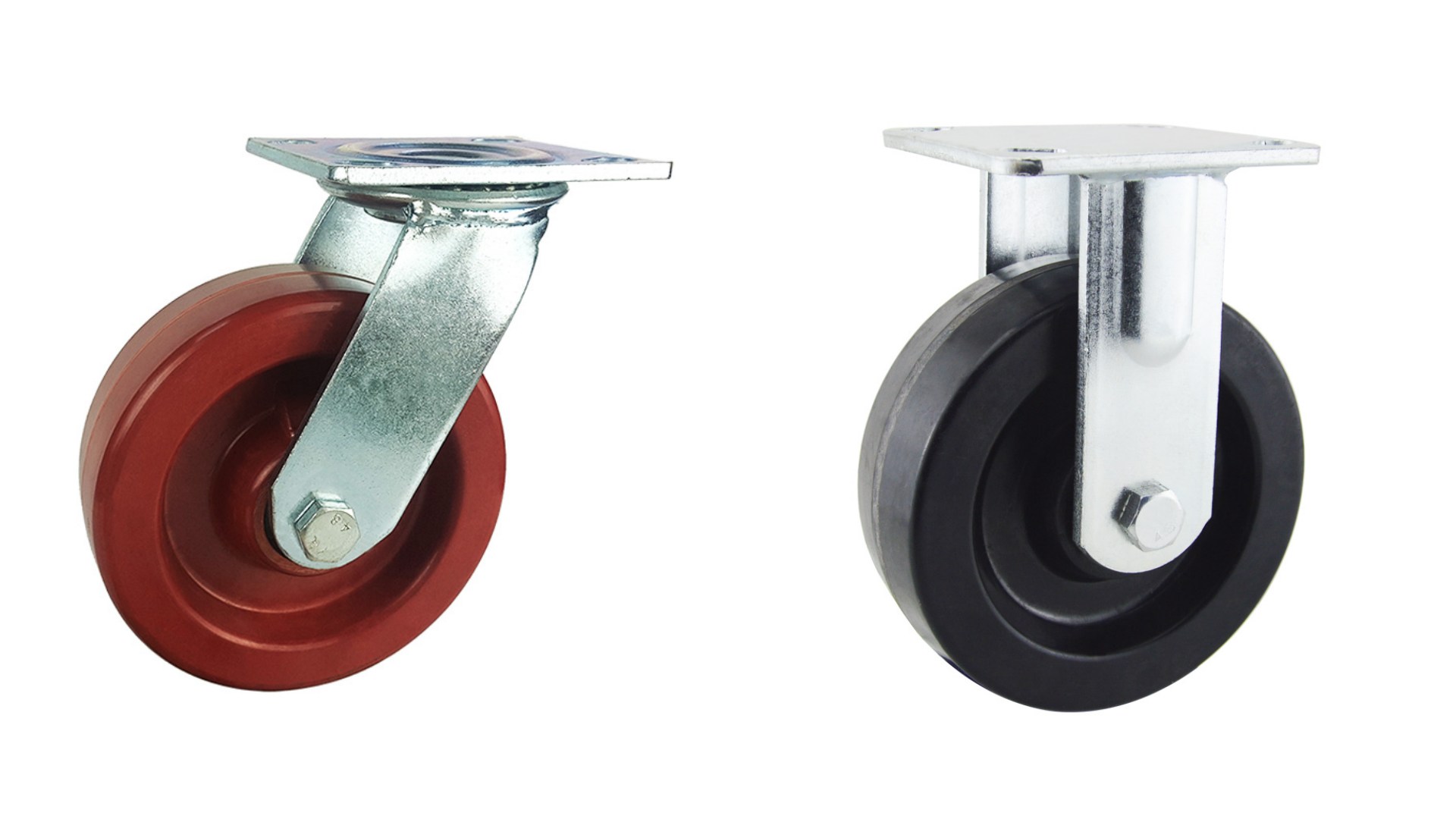
This guide highlights the top 10 factors to keep in mind when purchasing heat resistant phenolic caster wheels.
High Weight Capacity
Heavy duty phenolic caster wheels have an excellent strength-to-weight ratio, enabling them to support heavy loads. This is due to the phenolic resin, which is molded under high pressure and temperature, giving the wheels the necessary strength and durability.
Cost-Effective
These wheels are an economical choice, but their affordability comes with a trade-off. Over time, environmental wear and tear can shorten their lifespan, leading to earlier replacement needs.
Ideal for Stationary Loads
Phenolic caster wheels are well-suited for applications where mobility is minimal. Their durability in stationary settings reduces concerns about floor damage or frequent wheel replacements.
Potential for Floor Marking
If your application requires frequent movement on delicate floors, phenolic wheels may not be ideal. The black tread often leaves marks, making them less suitable for sensitive surfaces. For superior floor protection, consider alternatives like YLcaster.
Hard and Durable
Made from macerated denim combined with phenolic resin, these wheels are extremely tough, with a hardness comparable to a bowling ball.
Phenolic Casters vs. Polyurethane Casters
Phenolic Caster Wheels:
Pros: Affordable and built for heavy-duty use, phenolic casters are excellent at carrying large loads and are impact-resistant, making them ideal for relatively stationary heavy equipment.
Cons: They can be noisy due to their hardness, don’t perform well on uneven floors, can collect debris, and may absorb water if the outer shell is damaged.
PU Heavy duty polyurethane caster wheel:
Pros: These casters offer smooth rolling and protect floors while supporting high loads. They provide better ergonomics compared to rubber wheels, resist chemicals and oils, are non-marking, and can be customized for specific needs like debris rejection or enhanced capacity.
Cons: Polyurethane casters can be more expensive and may experience tread separation in wet environments.
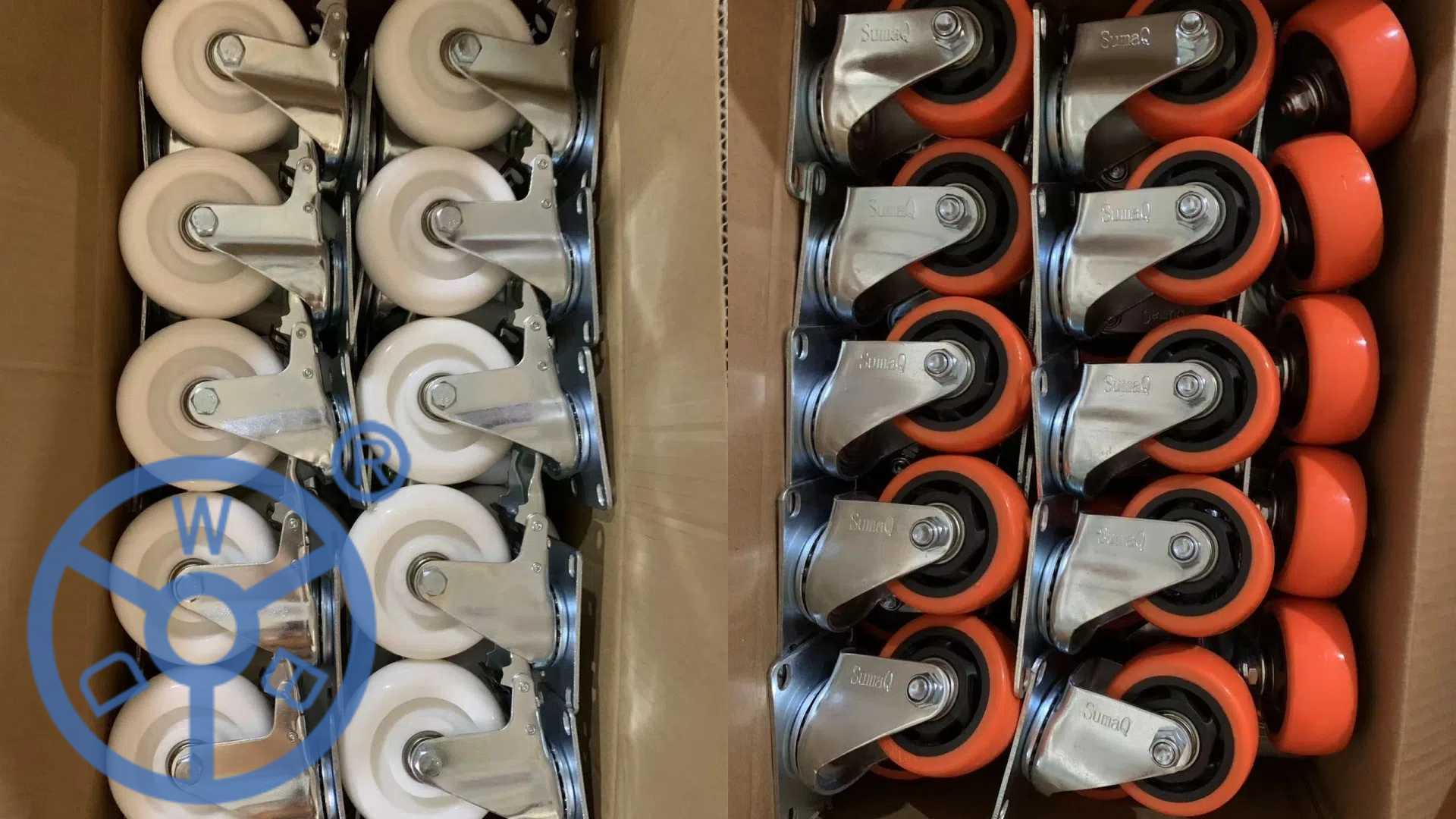
Selecting the appropriate material for caster wheels is vital for optimal performance and adaptability in various settings. Here are some of the top materials used for heavy duty trolley wheels:
Cast iron wheels: Constructed from high-strength ferrous material or steel, these wheels boast the highest tensile strength. They are perfect for high-heat and high-load conditions, commonly used in foundries, freight, and heavy manufacturing due to their durability and strength.
Rubber casters: Frequently used in industrial facilities, warehouses, and factories, rubber wheels excel in shock absorption and floor protection. They are known for their membrane compression properties.
Polyurethane wheels: These wheels are crafted by casting liquid polyurethane onto cores of wrought steel, aluminum, or cast iron. They provide exceptional abrasion resistance, making them ideal for environments that require floor surface protection.
Plastic wheels: With resistance to corrosive chemicals and a high load capacity, plastic or nylon wheels are perfect for clean environments like food processing plants, where contamination risks are significant.
Solid/Pneumatic casters: Ideal for uneven or rough surfaces, these wheels offer excellent cushioning, making them suitable for outdoor use. They ensure smooth travel over rough terrain and are widely used in construction and agriculture.

Specialized Casters For Heavy Duty Trolley Wheels
Engineered to absorb shocks and minimize vibrations, these casters protect both loads and floor surfaces. They are ideal for transporting delicate equipment or moving over uneven terrain.
Featuring integrated springs, these casters provide enhanced shock absorption for applications where loads are subject to drops or impacts. The springs help evenly distribute weight and reduce stress on the caster.
Heavy Duty Medical Casters:
Designed for medical facilities, medical caster wheels and hospital bed wheels operate smoothly and quietly, and are often resistant to corrosion and capable of withstanding frequent cleaning. They offer stability and ease of movement for medical equipment and furniture.
Ylcaster also a medical caster manufacturer and hospital bed casters manufacturer,providing high quality & good price casters, which saves you worry, effort and expense.
The diameter of a caster wheel affects how easily the caster moves over particulate, rough or irregular surfaces. Large diameter caster wheels are able to bridge gaps like that between the floor and an elevator car. However, the larger the diameter of a caster wheel, the higher the caster support arm must be. Either the base of a low-hanging object must be lifted higher above the wheels, or the casters must hang out to the sides straddling the low-hanging supported object. While rotating around the vertical shaft, swivel caster wheels sweep out a space. Larger wheels require more of this space.
Load capacity may be increased by using wider wheels with more ground contact area. However, when rotating a wide swivel caster in-place, the center part of the wheel-to-ground contact patch rotates slower than the regions further out to the sides. This difference in rotation speed across the base of the wheel contact patch causes wide wheels to resist rotation around the swivel, and this resistance increases as weight loading increases.
An alternative way to increase load capacity while limiting swivel-rotation resistance is to use multiple narrow wheels in tandem on the same wheel axis. Each wheel has a comparatively narrower ground contact patch than a single wide wheel, so there is less resistance to turning in place on the swivel.
Furniture casters facilitate easy movement of furniture across various surfaces, reducing the effort required for rearrangement and cleaning. Furniture casters can be divided into such types: Ball Casters, Chair Casters and so on. They come in various materials, including plastic, rubber, and metal, each offering unique benefits in terms of durability and floor protection.
Furniture casters play a crucial role in optimizing space utilization and facilitating flexible furniture arrangements in both residential and commercial settings. Their presence enhances convenience, accessibility, and ergonomic comfort, contributing to improved productivity and well-being.
In conclusion, furniture casters are indispensable components of modern furniture design, offering versatility, functionality, and ease of use. Understanding their significance is essential for selecting the appropriate casters to meet the specific requirements of any space or application.
Industrial casters showcase remarkable versatility across a myriad of industrial industrial casters applications, offering indispensable mobility solutions that enhance efficiency, safety, and adaptability in diverse environments.
In heavy-duty manufacturing settings, industrial casters excel in transporting massive machinery and equipment with ease. Designed to withstand immense loads, these casters feature robust materials like forged steel frames and polyurethane or steel wheels, ensuring stability and durability even in the most demanding conditions. Whether it’s moving heavy machinery within a factory floor or navigating rough terrain in construction sites, industrial casters provide reliable mobility and support.
Material handling and logistics benefit immensely from the versatility of industrial casters. Integrated into carts, dollies, and pallet jacks, these casters facilitate the smooth movement of goods and materials throughout warehouses, distribution centers, and manufacturing facilities. Swivel casters enable precise steering, while rigid casters ensure straight-line tracking, allowing workers to navigate tight spaces and crowded aisles efficiently. Specialized caster designs minimize noise and vibration, protecting fragile goods during transportation.
Ergonomic workstations and assembly lines rely on industrial casters to enhance worker comfort and productivity. Casters with ergonomic features such as swivel locks and height adjustability allow operators to customize work surfaces and tool carts, promoting proper posture and minimizing strain during prolonged use. Additionally, caster-mounted tool trays and parts bins enhance accessibility, keeping essential tools and components within reach for efficient assembly processes.
Cleanroom facilities and healthcare settings demand stringent cleanliness standards, which industrial casters meet with specialized designs. Stainless steel casters with sealed bearings and smooth surfaces prevent the accumulation of dust, debris, and pathogens, maintaining sterile environments and preventing cross-contamination.
Overall, industrial casters demonstrate unparalleled versatility.
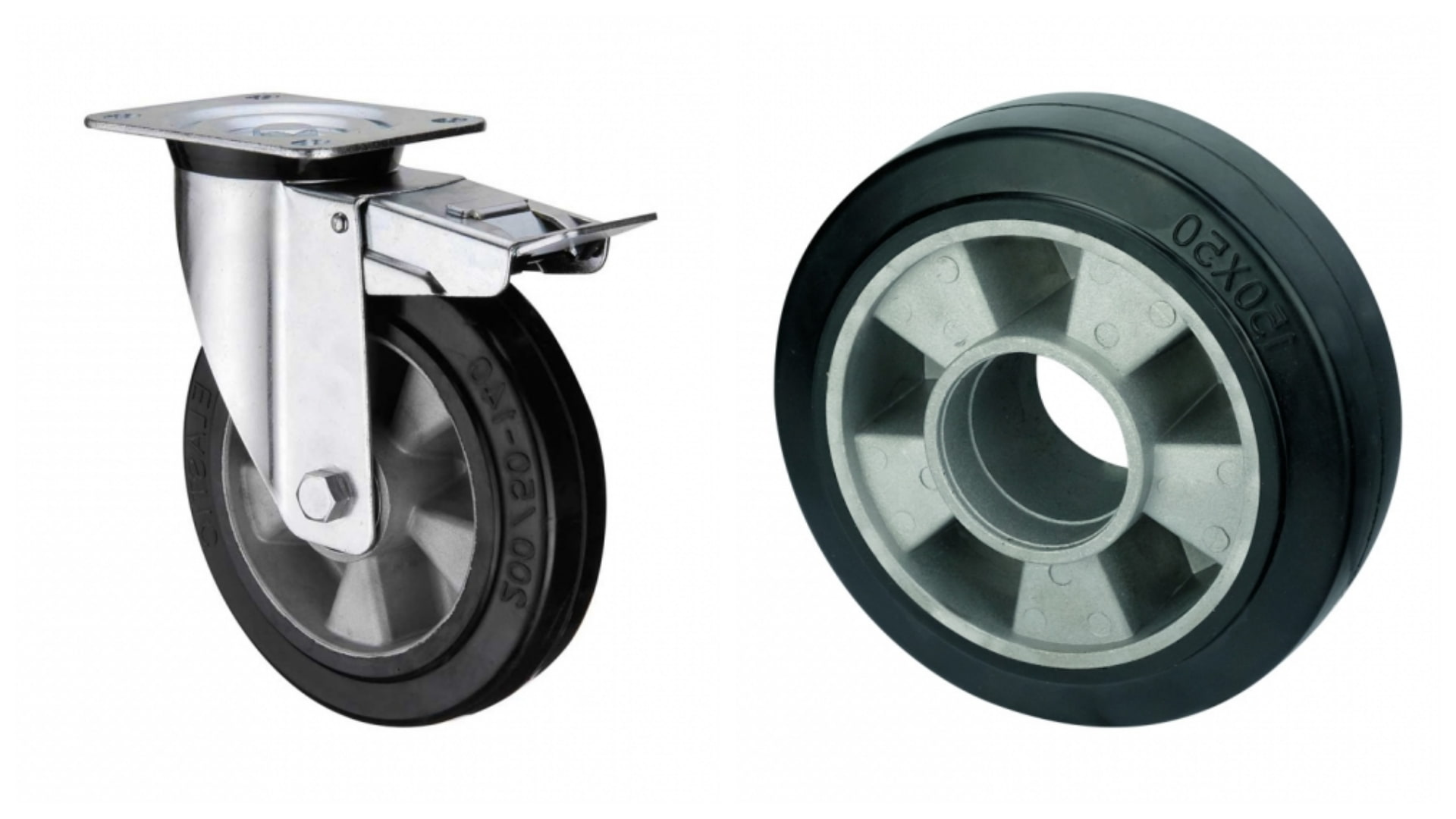
Casters and wheels are essential components for mobility in various applications, but they are not the same.
A caster consists of the rig (the part that holds the wheel) and the wheel. It mounts to the bottom of a larger object, such as a cart or dolly, so operators can easily move the object. Casters come in different materials, wheel diameters, tread widths, load ratings, and overall heights to give your equipment mobility in many kinds of work environments.
Here's a detailed explanation of each and their differences:
Casters
Definition: Casters are assemblies that include a wheel and a mounting system. They are designed to be attached to the bottom of an object, allowing it to move easily.
Components:
- Wheel: The rotating part that makes contact with the ground.
- Mounting System: This can be a plate or a stem that attaches the wheel to the object. The mounting system often includes a swivel mechanism.
Types of Casters:
- Rigid (or Fixed) Casters: These only allow back-and-forth movement. They do not swivel, making them suitable for straight-line travel.
- Swivel Casters: These can rotate 360 degrees, allowing for more maneuverability. They are often used in combination with rigid casters for easier directional control.
Applications: Casters are used in furniture, industrial equipment, medical equipment, office chairs, carts, and many other items that require mobility.
Wheels
Definition: Wheels are simple circular components that rotate around an axle. They are one part of a caster but can also be used independently.
Components:
- Wheel: The round part that rolls on the ground.
- Axle: A rod or spindle that passes through the center of the wheel, allowing it to rotate.
Types of Wheels:
- Solid Wheels: Made from a single piece of material, providing durability and strength.
- Spoked Wheels: Have spokes between the hub and the rim, often lighter and used in applications like bicycles.
- Pneumatic Wheels: Filled with air, providing cushioning and shock absorption, often used in outdoor or rough terrain.
Applications: Wheels are used in vehicles, machinery, toys, and various devices that require rolling movement.
1. For Functionality: Casters provide a complete mobility solution, often including a swiveling mechanism for better maneuverability while wheels are basic rolling components that need additional hardware to attach to objects and provide mobility.
2. For Usage: Casters are typically used in applications where an object needs to be easily moved and often requires changing directions. Wheels are used where straight-line movement is sufficient or in combination with other components to create more complex mobility solutions.
3. For Complexity: Casters are more complex, involving multiple components and mechanisms. Wheels are simpler, often just a single rolling part.
4. For Installation:Casters are usually attached using a mounting plate or stem, involving more installation steps. Wheels are attached directly to an axle, which might be part of the object or a separate assembly.
- Automotive Engine Rubber Parts8
- Automotive Lamps Rubber Parts5
- Automotive Suspension Rubber Parts2
- Automotive Wiring Harness Rubber Parts3
- Extrusion Sealing Strip1
- Industrial Electrical Rubber Parts3
- Industrial Scanners2
- Industrial electrical control3
- Industrial slings4
- Machine Tool Blades1
- Membrane Products1
- Motor1
- Racecource Rubber Products3
- Rubber Forklift Attachments1
- Rubber and plastic Parts1
- Seal2
- Tubular Motor2
- industrial hose1
- mold1
- plc2
- pump1
- racking2